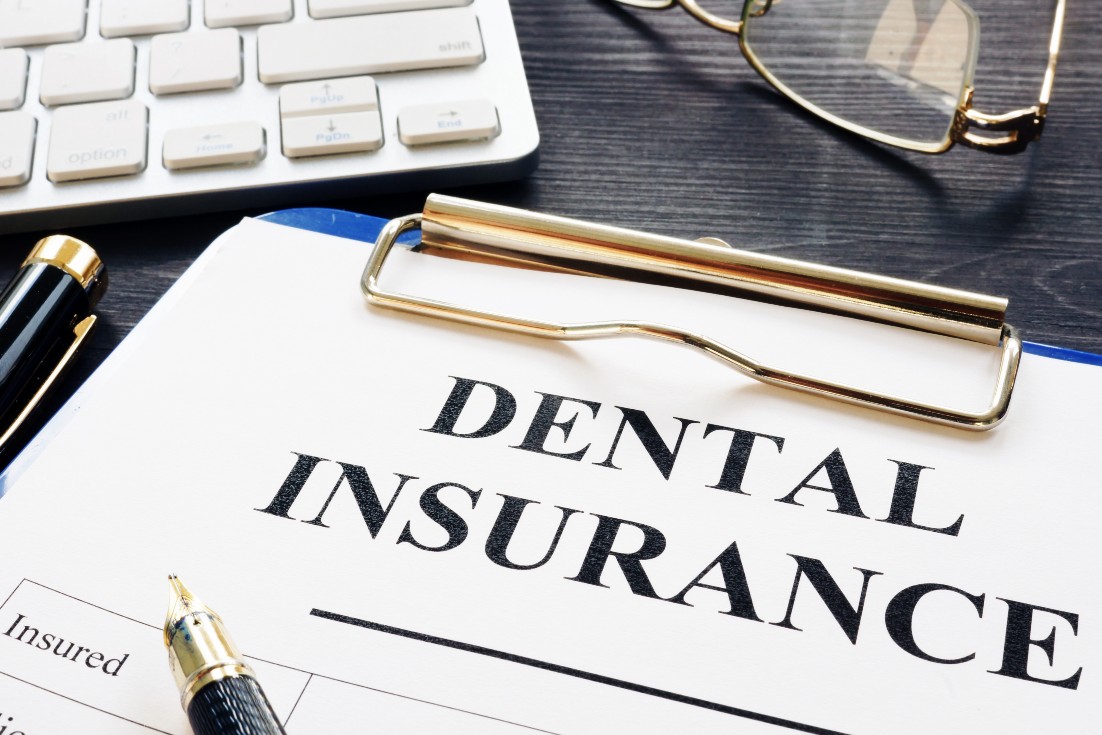
Unlike homeowner’s or automobile insurance, dental insurance is something you definitely WANT to use. Other insurance plans are often designed to cover a loss. For example, your homeowner’s insurance will reimburse you if you lose your home to a fire or natural disaster and if your car is damaged in an accident, your car insurance pays to have it repaired. Of course, specific coverage amounts vary depending on the policy, but the premise is the same (i.e., the insured must incur a loss before they receive reimbursement). Dental coverage, however, is set up as a benefit plan, which means it covers certain costs up to a maximum amount.
How does dental insurance work?
The typical dental insurance plan is structured based on a 100-80-50 model. While it can sound confusing, this means that they pay for 100 percent of preventive care (exams, cleanings and X-rays), 80 percent of basic treatments like cavity fillings, and 50 percent of major procedures such as tooth extractions and root canal therapy.
In addition, dental insurance companies also set yearly maximums for the amount they will pay towards certain types of treatment. It’s common to have a limit of $1,500 to $2,000 annually for restorative procedures (fillings, crowns, etc.), and a $1,500 to $2,000 lifetime benefit for orthodontics.
While dental insurance is an asset, it’s not a complete catch-all. It is possible that some procedures recommended by your dentist won’t be covered at all by your dental plan. Another key factor is that the vast majority of dental plans are based on care delivered within a calendar year. What you don’t use between January – December of that year, you lose. So, if your plan offers $2,000 a year for restorative procedures and you didn’t need any in 2020, that $2,000 expires on December 31st. Instead of going towards keeping your smile healthy, unused funds go back to the insurance provider. To maximize your dental insurance, make sure you match or exceed your yearly maximums before they expire.
How to choose a dental plan
Selecting the right dental plan for you and your family is a personal choice and there are many options. Below are three of the most popular types of plans:
- Preferred Provider Organization (PPO) A PPO is a dental plan that uses a network of dentists who have agreed to provide dental services for set fees. The number of dental services covered depends on the plan. If you have a PPO plan and see a dentist out of the network, you will most likely have more out of pocket expenses.
- Dental Health Maintenance Organization (DHMO) DHMO is like an HMO. Network dentists are paid a set fee every month to provide covered dental services to you whether you see the dentist or not. Some of the covered services are no cost to you, while other services require a co-payment on your part.
- Discount or Referral Dental Plans Under this model, the company selling a discount or referral plan contracts with a group of dentists who agree to discount their fees. Discounts are usually applied to all services, including cosmetic procedures. Unlike PPOs and DHMOs, these plans do not pay for services received. Instead, you pay for treatment at the time of service at the reduced rate determined by the plan.
Between PPOs, DHMOs and 100-80-50 formulas, navigating the ins-and-outs of dental insurance can be stressful. However, our dental team is here to address your questions and help you maximize your benefits. Don’t hesitate to contact our office to discuss options or schedule an appointment for your year-end cleaning.

 (215) 637-7474
(215) 637-7474 APpointments
APpointments